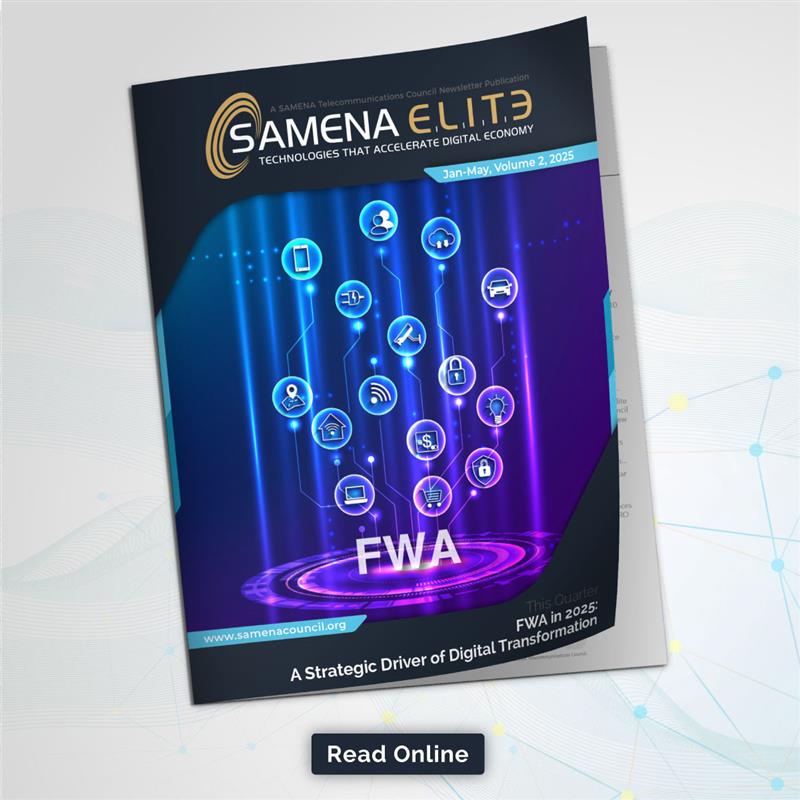At Mobile World Congress (MWC) Shanghai 2025, Huawei showcased groundbreaking AI-powered network solutions that promise to reshape telecommunications infrastructure and accelerate the transition to an intelligent world.
Meanwhile, Huawei senior executives delivered keynote presentations at multiple summit events, highlighting how artificial intelligence is transforming ultra-broadband networks and enabling all-scenario IoT connectivity.
AI Reshapes Ultra-Broadband Networks for New Growth
During the BDC Shanghai 2025 summit hosted by the World Broadband Association (WBBA), David Wang, Huawei's Executive Director of the Board, introduced the company's newest AI ultra-broadband (UBB) solution during his keynote speech titled "AI Reshapes UBB for New Growth."
The comprehensive AI UBB solution comprises four innovative sub-solutions designed to create next-generation network infrastructure:
AI FAN (Fixed Access Network) transforms home broadband by turning existing home gateways into unified AI portals, enabling seamless user interaction through voice, video, and gesture controls. The solution delivers industry-leading 50G PON technology, allowing carriers to provide ubiquitous 10 gigabit access – a significant upgrade from current 1 Gbit/s and 10G PON standards. Conventional optical line terminals (OLTs) are upgraded to intelligent devices with edge computing capabilities, supporting device-edge-cloud compute synergy.
AI OTN (Optical Transport Network) addresses the critical need for low-latency transmission in AI applications, where one-millisecond compute access has become fundamental for urban AI computing networks. The solution provides higher-quality transmission through native intelligence in network devices and optical-electrical synergy, enabling sub-wavelength-level optical switching and ultra-low latency data center access. An embedded AI digital twin simulation model automates and coordinates optical and electrical scheduling for more efficient service rollout.
AI WAN (Wide Area Network) leverages AI models to precisely identify various types of AI services, including encrypted video flows and elephant flows, offering differentiated service assurance that traditional networks cannot provide. The solution incorporates intelligent flow scheduling, long-distance lossless transmission, and built-in security protection engines that identify and block unknown threats within minutes.
ADN (Autonomous Driving Network) represents an AI-assisted, agent-centered, three-layer architecture supporting L4 UBB autonomy. The system features network element layers with intelligent hardware, control layers with AI agents and copilots based on the Telecom Foundation Model, and service layers providing unified operations platforms across multiple domains and vendors.
5G-A Powers All-Scenario IoT for Intelligent Connections
At the GSMA IoT Summit, Eric Zhao, Vice President and Chief Marketing Officer of Huawei Wireless Solution, delivered a keynote speech titled "5G-A Powers All-Scenario IoT, Turbocharging a New AIoT Era for All." Zhao outlined how the convergence of IoT and AI is making intelligent connections ubiquitous across all scenarios.
The vision for full AIoT relies on three critical elements:
All-Scenario IoT expands IoT connections to every scenario through technologies, including 5G RedCap and Ambient IoT, while also integrating with existing solutions like NB-IoT. This enables innovative applications from embodied AI robots that require real-time connections, as well as AI-based product quality inspection, which demands super-fast, low-latency connections.
Ultra-Broadband Networks powered by 5G-A technology offer Gbps uplink capabilities, ultra-low latency, and extensive coverage. These networks enable the collection and real-time movement of hyperscale data to cloud computing and industrial application platforms for AI training and inference.
Intelligent Applications driven by industry-specific and scenario-specific models are transforming core production processes across industries. In one Guangdong manufacturing facility, AI algorithms integrated into 5G HD cameras have improved product quality while reducing equipment repair rates by 20% and saving over CNY1 million annually.
Industry Transformation and Future Outlook
With artificial general intelligence (AGI) advancing faster than predicted and large language models evolving toward multi-modality, Huawei has adopted an All-Intelligence strategy prioritizing full-stack AI capabilities and open ecosystem platforms. The company is leveraging this strategy to provide leading AI solutions to the telecom industry, government, enterprise customers and consumers.
Meanwhile, the massive demand for computing interconnection and device-cloud synergy is driving bearer networks to shift from best-effort to deterministic assurance for larger bandwidth, deterministic low latency, and ultra-high security. Additionally, digital home services are being rapidly replaced by intelligent home applications, prompting carriers to expand service boundaries beyond traditional networks and cloud services.
David Wang concluded his presentation by emphasizing the unprecedented opportunities presented by the approaching AGI era for the UBB industry. He called for industry-wide collaboration to reshape UBB networks with AI, specifically advocating for the exploration of new business models, unified industry standards, mature AI UBB capabilities, and thriving application ecosystems.
Eric Zhao similarly called for continued industry-wide efforts to promote cellular IoT development, stating, "We will continue to work with industry partners to develop more converged applications of cellular IoT and AI. We will develop a thriving ecosystem to usher in a new age of full intelligent IoT connectivity."
As the commercial adoption of 5G-Advanced accelerates in 2025, Huawei continues collaborating with global carriers, industry experts, and opinion leaders to explore how AI innovations can reshape telecom services, infrastructure, and operations to generate new revenue sources and accelerate the transition toward an intelligent world.
Source: Huawei Press Release
